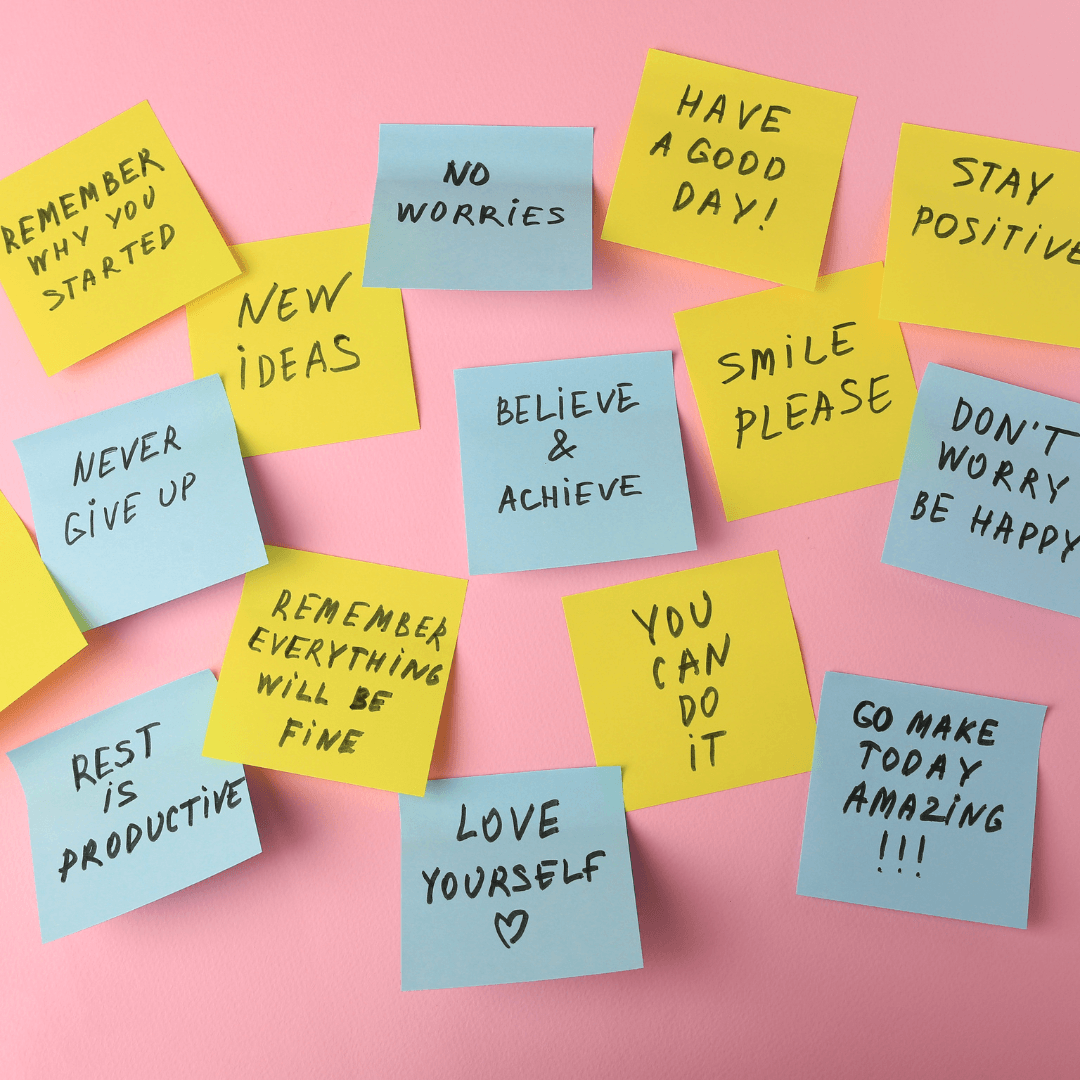How To Make Someone Feel Comfortable With You
How To Make Someone Feel Comfortable With You
Creating genuine comfort in another person's presence is a rare and precious skill in a world brimming with fleeting interactions and digital connections.
Mastering the art of ‘Making Someone Feel Comfortable With You' is the key to fostering deep connections and meaningful interactions in a world filled with fleeting encounters.
It's the art of making someone feel truly at ease, like they can be themselves without reservation. To have a happy life, one must make others feel comfortable.
This ability is essential in the workplace, with family, friends, and even strangers. Every time you interact with someone, you send them various verbal and nonverbal cues that reveal everything from your present state of mind to your viewpoint on a particular subject.
In this article, we will embark on a journey to unlock the secrets of building profound connections, forging trust, and leaving a lasting impression by mastering the art of making someone feel comfortable with you.
The Importance Of Making Someone Feel Comfortable With You
Creating a comfortable environment and making someone feel at ease in your presence is essential for fostering healthy and meaningful relationships.
When people feel comfortable with you, they are more likely to open up, share their thoughts and feelings, and engage in genuine and authentic interactions. This is crucial in both personal and professional spheres.
In personal relationships, whether with friends, family, or romantic partners, making someone comfortable with you builds a foundation of trust and intimacy.
Making someone comfortable with you is the cornerstone of cultivating profound trust and intimacy within personal relationships, enabling the authenticity and emotional connection that strengthens bonds and resilience.
It allows individuals to be their true selves without fear of judgment or rejection, which, in turn, strengthens the emotional bond between you.
Comfortable relationships are more resilient, as they can weather conflicts and challenges with greater ease, knowing there is a safe and supportive space to address issues.
In a professional context, making colleagues, clients, and superiors comfortable is a valuable asset. It enhances teamwork, communication, and collaboration.
When people feel comfortable in the workplace, they are more likely to express their ideas, provide constructive feedback, and contribute to a positive and productive atmosphere. As a result, an organization may experience a rise in job satisfaction, innovation, and general success.
Moreover, making others comfortable in social situations and networking can be powerful. It can help you establish rapport, make a favourable impression, and create opportunities for personal and career growth.
Ultimately, making someone feel comfortable with you is about enhancing the quality of your relationships and fostering a sense of belonging, trust, and mutual respect. It's a foundational element of effective communication and the key to building connections that can last a lifetime.
A Pathway To Making Someone Feel Comfortable With You
Imagine a world where every interaction is a step along a pathway of warmth and ease, where trust and connection flourish effortlessly.
In this world of warmth and ease, making someone feel comfortable with you is the guiding principle, a way of life that nurtures trust, forges connections, and enriches every interaction.
In this world, making someone feel comfortable with you isn't just a skill; it's a way of life. It's about crafting moments of genuine comfort and authentic connection in a society often marked by hurried exchanges and superficial encounters.
Making someone feel comfortable with you is a valuable skill that can strengthen relationships and improve communication. Here are several ways to achieve this:

1. Active Listening
Active listening is like tuning in to a captivating story, where you hang on to every word, eager for the next chapter. It's more than just hearing; it's about immersing yourself in the speaker's world.
When you actively listen, you're not just using your ears; you're employing your entire being to understand and connect.
Imagine someone pouring their heart out to you, sharing their thoughts, dreams, and fears. As they speak, your eyes lock onto theirs, not confrontational, but in a way that says, “I'm here with you, completely.”
Nodding gently, you offer subtle affirmations that you're hearing and comprehending, like a guide leading them through the maze of their thoughts. You interject with phrases like “I understand” or “Tell me more,” signalling your genuine interest in delving deeper.
This level of engagement transforms a conversation into a meaningful exchange. It conveys respect, empathy, and a willingness to connect profoundly.
Active listening is the key to making someone feel comfortable with you, transforming a simple conversation into a profound exchange where genuine connection and comfort are at the forefront.
So, the next time you engage in a conversation, remember active listening isn't just about hearing; it's about creating a symphony of connection with the harmonious notes of your attention, nods, and empathetic responses.

2. Empathize And Validate
Empathizing and validating someone's feelings is like extending their soul a warm, comforting embrace. It's the art of stepping into their emotional shoes and letting them know their experiences and emotions are acknowledged and deeply understood.
Picture a moment when a friend confides in you about a challenging situation. Instead of rushing to offer solutions, you pause and delve into their world of emotions.
With genuine curiosity, you seek to grasp the nuances of their feelings. As they pour their heart out, you respond with empathetic words like “I can see why you'd feel that way” or “It's completely normal to feel like that.”
These simple phrases become bridges that connect you on a deeper level. They convey that you're not just hearing words but recognizing the emotional landscape beneath them.
Your validation tells them that their feelings are valid and respected. At that moment, you're their safe harbour in the storm, and they feel understood, accepted, and remarkably comfortable sharing their innermost thoughts.
Empathizing and validating are acts of compassion and connection. They remind us we're all human, navigating life's complex emotions together.
So, the next time someone opens up to you, remember the power of empathy and validation, for they can turn conversations into moments of profound understanding and comfort.

3. Respect Personal Space
Respecting personal space is akin to acknowledging an invisible force field around each person. In this space, they control who enters and how close they get.
It's an unspoken agreement in the social dance we all partake in, ensuring everyone feels comfortable, safe, and free to be themselves.
Respecting personal space is akin to acknowledging an invisible force field around each person. In this space, they control who enters and how close they get, which can make someone feel comfortable with you.
It's an unspoken agreement in the social dance we all partake in, ensuring everyone feels safe and free to be themselves.
Imagine being at a social gathering, surrounded by friends and acquaintances. As you engage in conversations, you notice how some people effortlessly navigate the space around you, always maintaining a respectful distance.
They understand the boundaries that safeguard your comfort intuitively. Their presence is like a breath of fresh air, allowing you to relax and enjoy the moment.
On the flip side, you might encounter individuals who disregard these boundaries, inching closer with each word, their physical proximity feeling invasive and unsettling. In such situations, you might find yourself physically and emotionally retracting.
Respecting personal space is an unspoken yet essential aspect of making others feel comfortable with you. It communicates your awareness and respect for their boundaries, fostering trust and ease.
So, whether in crowded social settings or intimate one-on-one conversations, remember that allowing others their personal space is like extending a silent invitation to feel at ease in your presence, where they can truly shine.

4. Maintain A Positive Body Language
Your body language is a silent symphony that can either harmonize with the conversation's melody or create discordant notes that disrupt the flow.
Maintaining positive body language is like adding a touch of magic to your interactions, transforming them into vibrant and engaging exchanges.
Picture yourself engaged in a conversation, your eyes alight with interest, and a warm, genuine smile gracing your lips. Your posture exudes confidence but is not overbearing; it's open and welcoming.
Your arms rest comfortably at your sides, not crossing in front of you like a barricade. This unspoken language sends a powerful message: “I'm approachable, receptive, and ready to connect.”
On the contrary, imagine someone with folded arms, their brow furrowed in a defensive posture. Their body language screams closure, a wall erected between them and the world.
In this scenario, it's difficult to make someone feel comfortable with you or at ease, as their nonverbal cues suggest resistance rather than receptivity.
Maintaining positive body language invites others into a space of trust and comfort. It conveys that you're not just present in body but also in spirit, genuinely interested in what they say. It's a nonverbal handshake that says, “I'm open to this connection.”
So, in your next interaction, remember the magic of a smile, good posture, and open arms. They are the keys to orchestrating a symphony of connection, where comfort and trust dance hand in hand.

5. Be Non-Judgmental
Being non-judgmental is like crafting a sanctuary for honest and unfiltered expression in a judgmental world. It's the art of creating a safe harbour where people can unfurl their thoughts, emotions, and vulnerabilities without fear of condemnation or criticism, making someone feel comfortable with you in their most authentic self.
Imagine a scenario where a friend confides in you about a decision they've made that they're unsure about. Your response is a gentle nod of understanding, and you offer a listening ear without immediately jumping to evaluate or critique their choices.
Your words are free from judgment, and you allow them to navigate their thoughts without the weight of your opinions. In this space, they can breathe easy, knowing that your presence is one of acceptance and support.
Contrast this with an environment where every utterance is met with judgment or unsolicited advice. In such a setting, people often hesitate to share their true thoughts and feelings, fearing they will be met with criticism or unwanted opinions.
Being non-judgmental is an invaluable gift you can offer in your interactions. It tells others that their perspectives are valid, even if they differ from your own.
It fosters comfort by creating a judgment-free zone where ideas and emotions flow freely. So, the next time someone confides in you, remember that your non-judgmental stance is like a beacon of comfort, guiding them through the stormy seas of self-expression towards a shore of trust and acceptance.

6. Offer Compliments And Affirmations
Offering compliments and affirmations is like sprinkling a bit of stardust into someone's day, brightening their path with the warmth of appreciation and encouragement. It's a gesture that makes them feel valued and helps bolster their self-esteem.
Imagine you're conversing with a colleague who has just presented an idea. You seize the opportunity to compliment their creativity and insight genuinely.
As you do, their face lights up with a radiant smile, and their confidence visibly soars. In that moment, your words have acted as a tonic for their self-esteem, elevating their spirits and making them feel like a valued contributor.
In contrast, picture a scenario where your colleague's idea is met with indifference or silence. Their enthusiasm wanes, and they may start doubting their contribution. The absence of affirmations creates an emotional void that can leave them feeling unappreciated and undervalued.
Offering compliments and affirmations isn't just about being polite; it's about recognizing and celebrating the unique qualities and efforts of others.
It's a straightforward yet effective method for fostering comfort and trust, fostering an environment where individuals feel valued and empowered to contribute their best selves.
So, in your interactions, consider the magic of a well-timed compliment or affirmation; it can light up someone's world and deepen the bonds of comfort and connection.

7. Share Vulnerabilities
Sharing vulnerabilities is like opening the door to the inner sanctum of your humanity, inviting others in to connect on a deeper, more authentic level. It's a powerful act that breaks down walls, fostering an environment where trust and comfort can flourish.
Imagine a conversation where a friend confides in you about a personal struggle. Instead of offering advice or reassurance from a distance, you share a similar experience from your own life.
As you do, you notice a shift in the conversation—the tension eases, and their eyes light up with recognition. In that moment, you've created a bridge of shared vulnerability, reminding them they are not alone in their journey.
Contrast this with an interaction where you maintain a facade of invulnerability, never revealing your challenges or insecurities. In such situations, the conversation can feel one-sided, with the other person left to navigate their struggles in isolation.
Sharing vulnerabilities isn't about overshadowing someone else's experiences with your own; it's about saying, “I've been there too, and I understand.”
It's a gesture of empathy that communicates that we're all human and no one is exempt from life's trials. It deepens connections by fostering trust and mutual understanding, where comfort can thrive.
So, the next time you find yourself in a moment of connection, consider sharing a vulnerability—it may be the key to creating lasting bonds of comfort and support.

8. Use Humor Wisely
Using humour wisely is like adding a sprinkle of laughter to the conversation, a universal language that can melt tension and build bridges.
It's a tool that can create comfort and camaraderie, but it must be wielded with care and consideration for the sensitivities and boundaries of others.
Imagine a gathering of friends where you decide to share a light-hearted, relatable joke. The room erupts in laughter, and the worry lines on their faces vanish. Your humour has acted as a soothing balm, breaking the ice and making everyone feel more at ease.
Conversely, envision a scenario where humour is used insensitively, perhaps poking fun at someone's expense or crossing a line that makes others uncomfortable. In such cases, laughter may ring hollow, making the atmosphere strained.
Using humour wisely involves being attuned to the people around you. It's about recognizing that what may be amusing to one person might be offensive to another.
It's the art of choosing humour that is inclusive, light-hearted, and free from harm. When done with sensitivity, humour can create shared joy and connection, making everyone feel more comfortable and connected.
So, the next time you bring humour into a conversation, remember that it's a potent tool for building comfort, but like any tool, it's most effective when used with awareness and respect for the feelings of those you're engaging with.

9. Express Gratitude
Expressing gratitude is like sprinkling magic into your interactions, transforming the ordinary into something extraordinary.
It's a small yet profound act that can make someone feel cherished and valued, forging a bond of comfort and goodwill.
Picture yourself in a conversation with a friend or colleague. As you part ways, you pause to express your genuine appreciation for their time and insights or simply for being there.
The warmth in your voice and the sincerity in your words create a lasting impression, leaving them with a sense of significance and warmth.
Now, imagine the contrast—a scenario where your interaction ends abruptly, with no acknowledgment of the value the other person brought to the exchange. It's like a missed opportunity, a door that remains slightly ajar but never fully opened.
Expressing gratitude isn't just about being polite; it's about acknowledging the richness that others bring into our lives. It tells them their presence matters, and their contributions are noticed and cherished.
This simple act can infuse your interactions with positivity and comfort, creating an environment where people feel appreciated and inspired to continue connecting and sharing.
So, in your conversations, don't forget the power of a heartfelt “thank you” and the profound comfort it can bring your relationships.
Conclusion
In conclusion, making someone feel comfortable with you is a tapestry woven with empathy, respect, and genuine connection.
It's about creating an atmosphere where trust and authenticity flourish, whether in personal relationships, professional encounters, or chance meetings.
Throughout this journey, we've explored various techniques and strategies, each one a brushstroke that contributes to the masterpiece of comfort and connection.
Ultimately, making someone feel comfortable is an art that requires practice, patience, and a genuine desire to connect.
It's about letting go of ego and embracing the humanity in all of us. As we navigate the intricate web of human relationships, remember that the comfort you offer today may blossom into a deeper connection tomorrow.
In this beautiful dance of understanding and acceptance, we enrich our lives and create a ripple effect of comfort and connection that touches the hearts of those around us.
So, let us continue this journey with open hearts and arms, for in the realm of genuine human connection, comfort is the key to building lasting and meaningful relationships.
I trust you enjoyed this article on How To Make Someone Feel Comfortable With You. Please stay tuned for more blog posts to come shortly. Take care!
JeannetteZ
>>>Please click here to read my all-inclusive article about Lessons That Will Teach You All About Stress<<<
>>>Are you interested in Natural Healing And Stress Relief Through Herbs? Please click here for my #1 Recommendation<<<
Your Opinion Is Important To Me
Thoughts? Ideas? Questions? I would love to hear from you. Please leave me your questions, experiences, and remarks about this article on How To Make Someone Feel Comfortable With You in the comments section below. You can also reach me by email at Jeannette@Close-To-Nature.org.
Disclosure
This post may contain affiliate links. I earn from qualifying purchases as an Amazon Associate and other affiliate programs. Please read my full affiliate disclosure.
You might also enjoy these blog posts:
Breadfruit Tree Growing Conditions
Easy Steps To Grow Euphorbia Flowers In Containers
Simple Steps Of Growing Cilantro In A Container
Necessary Steps Of Growing Parsley In A Container








